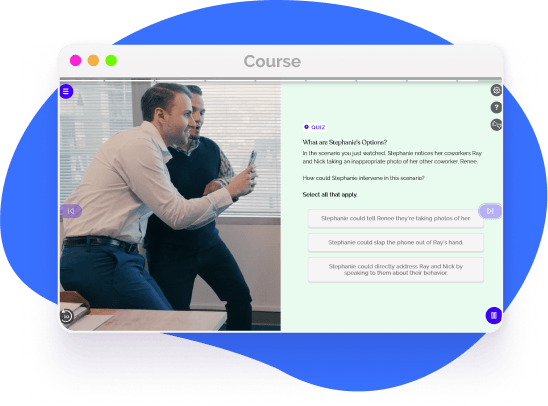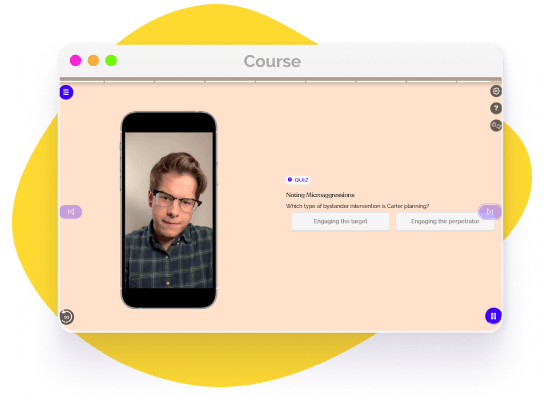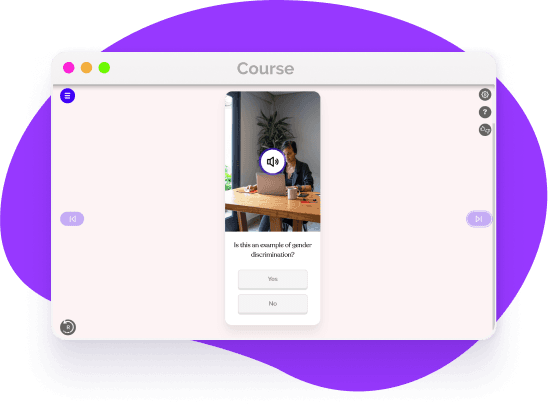Utilizing Bystander Intervention Skills in the Workplace
Being an active bystander when you witness microaggressions, discrimination, harassment, or violence, can make your workplace a safer, more welcoming place to be.

Empowering Skills in Bystander Intervention Training
The four types of bystander intervention are engaging your resources, engaging other bystanders, engaging the target, and engaging the perpetrator. De-escalation is a specific set of strategies for engaging the perpetrator when there is a risk of violence. Before you intervene as a bystander, you should check for safety, and assess your level of comfort and ability to stay calm in a stressful situation.

Many Benefits to Bystander Intervention Training
Employees who take this training will learn when and how to speak out against harassment, discrimination, and microaggressions at work. Participants will have a greater knowledge of the benefits of bystander intervention in a productive workplace by the end of the course. Workers who have undergone training will be better equipped to use bystander intervention techniques and properly communicate with coworkers, vendors, and more.

Whether or not you choose to intervene as a bystander when you witness microaggressions, discrimination, harassment, or violence, you can always report what you witnessed to a supervisor or to Human Resources.
Additionally, if you are the target of discrimination or harassment, it is a good idea to file a report with HR so that the problem can be properly addressed.
Remember, discrimination is unlawful. Reporting issues that arise can help your organization stay legally compliant in addition to making sure that your workplace provides equal opportunities to all.
By following up with the target after the incident, you can always give them delayed support. You can inquire if they require any assistance that you can provide, or you can offer to submit a report of your observations to the proper channels.
The Most Important Parts of Bystander Intervention
What are the most important skills that are learned in this bystander intervention training? This course addresses how to be an active bystander, the four types of intervention, how to de-escalate a situation, and remembering to check for safety first.
Here are some myths to look out for:
- -
Being an active bystander makes workplaces safer and more welcoming
- -
There are four types of bystander intervention.
- -
De-escalation is a strategy to reduce the likelihood of violence.
- -
Check for safety first.

Bystander Intervention Training Makes Everyone Safer
With the skills gained from bystander intervention training, employees can have the confidence required to intervene as a bystander in microaggressions, discrimination, and harassment. Employees will also learn best practices for de-escalating potentially violent situations. Using these skills in the workplace will help make it safer and more welcoming for everybody.

Helping over 8,000 organizations create a safer, more productive workplace
EasyLlama’s online training course helps prepare employees to navigate bystander intervention. The course guide learners how to appropriately confront harassment, discrimination, and microaggressions in the workplace. The course covers:





















